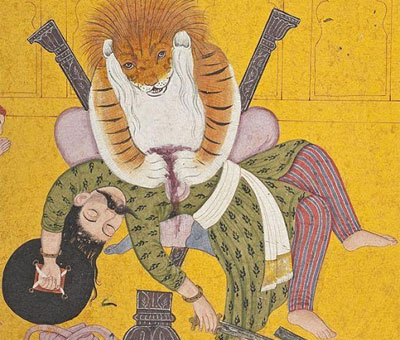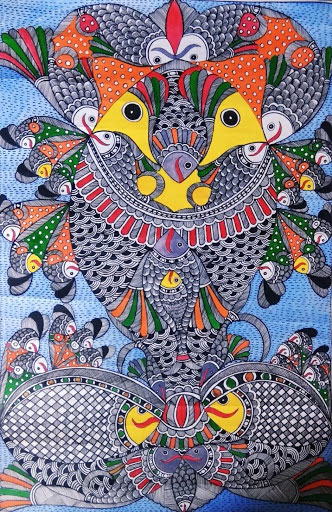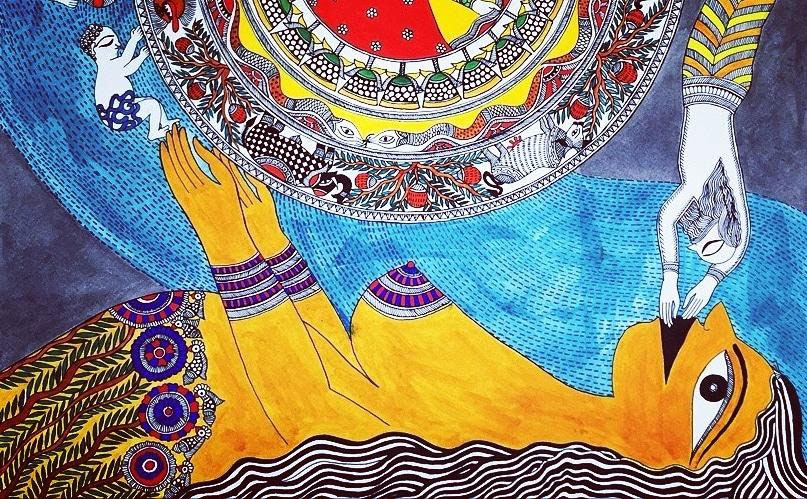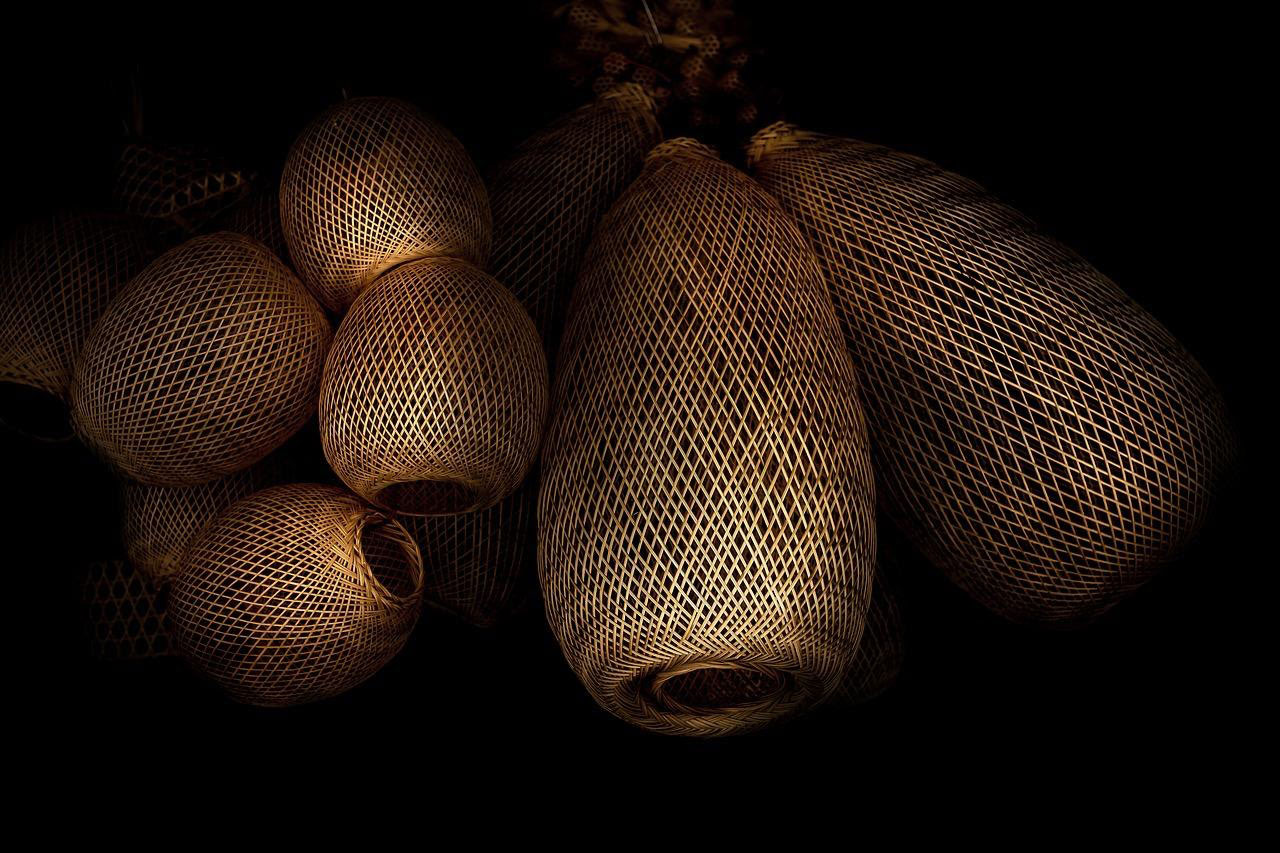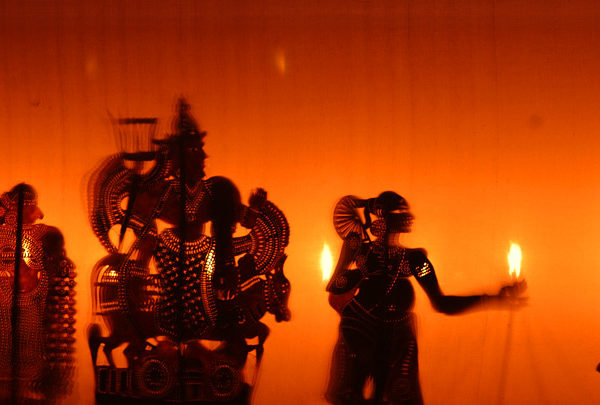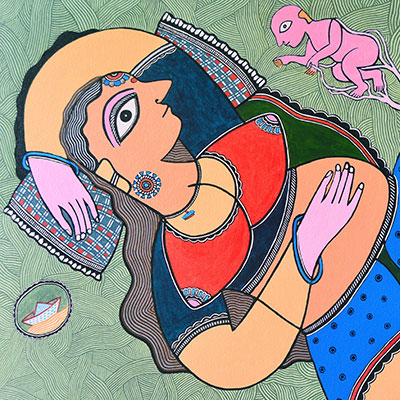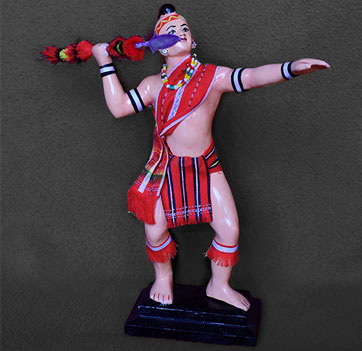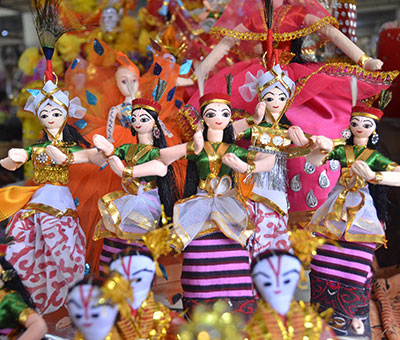A string of flowers melted within an elephant and a group of colourful cotton balls hanging down the branches of a banyan tree — these are a few of those many detailed patterns that Madhubani artists dip their hands in. Originated in the Mithila region of Bihar, India, Madhubani is an art form that has not only painted the country with gorgeous colours but has also contributed to the larger network of international art. Clothes, mats, notebooks, walls — Madhubani art knows how to blend with everything!
The origin of this art form can be rooted back to the era of Ramayana and has been an age-old tradition followed by women in rural India to decorate their huts and walls. Legend says that many Madhubani artists in Ayodhya had worked on painting the venue of Rama and Sita’s marriage.
Not only have the themes been influenced by legends and religious beliefs but they also draw inspiration from natural objects like sun, moon, flowers, plants, birds, and much more. The artists use a number of techniques such as fingers, twigs, brushes, nib-pens, matchsticks, natural dyes and pigments, etc. to paint. What is interesting about this art form is that there are several styles of paintings allocated to every Hindu festive occasion like Holi, Surya Shasti, Kali Puja, Upanayanam, Durga Puja, marriages, etc.
Since the 1300s, the socio-economic differences have been quite evident in the paintings based on different personal experiences of various communities in India. While women from upper caste families usually limited the paintings to religious motifs, household rituals, and ornamentation, women from the lower caste communities experimented and brought the rawness and depth of beauty in their paintings.
Originally being rich with the participation of womenfolk, the art form has now also started witnessing many men joining the field and taking it up as a profession. Along with adorning the coaches of Indian Railways, Madhubani art has also managed to create a global dialogue. Countries like Japan, Germany, France, and America have showcased the paintings through books, exhibitions, and many more creative mediums. The Mithila Museum in Japan has been solely dedicated to the artwork and exhibits around 900 paintings of different styles.
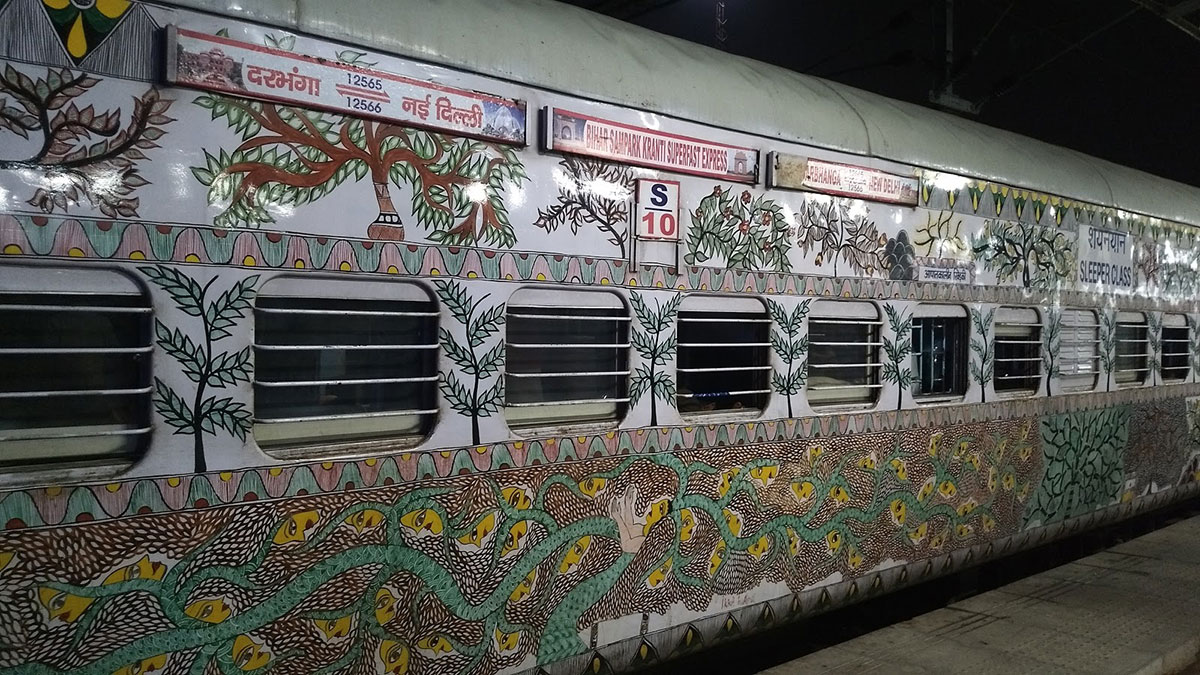 Coaches of Indian Railways covered with Madhubani painting
Coaches of Indian Railways covered with Madhubani painting
Bihar, a state much known for its festive culture and delicious cuisines, has a history of producing and reserving some of the most beautiful, globally-acclaimed artworks.
Handicraft is the heart of the art culture of Bihar. Needless to say that apart from Madhubani paintings, the state has produced beautiful crafts made of bamboo, cane, metal, and so much more.
Since the prehistoric era, the tribes in Bihar have used bamboo, cranes, and metal to make everyday products like baskets, mats, decorative items, and even furniture.
Also known as a Scroll painting, Manjusha Art is another beautiful treat from Bihar which is the only artform in India which is a sequential representation of stories.
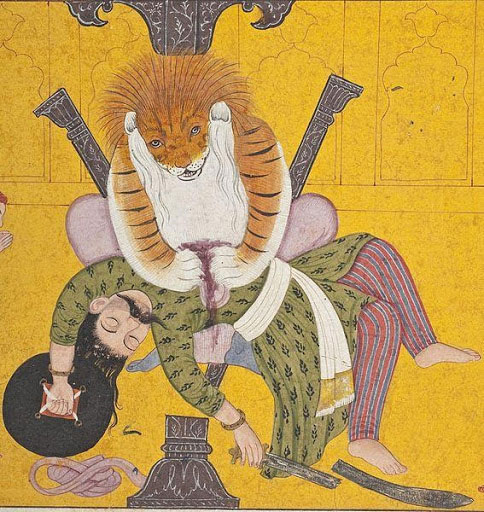
Manjusa art from Bhagavata Purana, 1760-70
Bihar has a rich history of pottery work that has been practiced in the state since the time of Mauryan and Gupta. Many excavations of archeological importance at places like Nalanda and Rajgir have confirmed the evidence of pottery. The potters of Bihar have been making beautiful utensils and tiles for many centuries now.
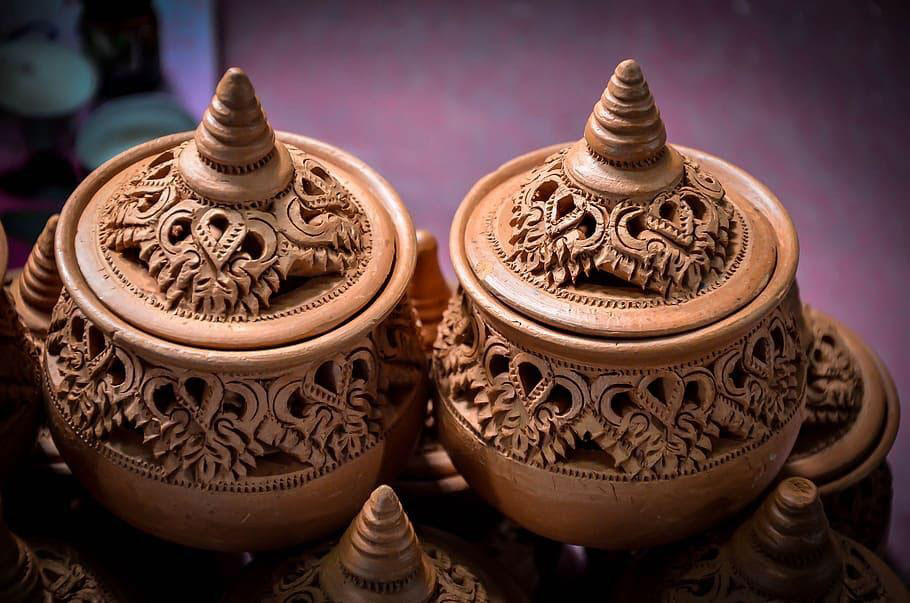
Traditional pottery used for decoration, 2000s
Sikki grass, an integral part of the living heritage of women in Northern Bihar, is used for making embroidery, papier mache, and is even used in Madhubani paintings.
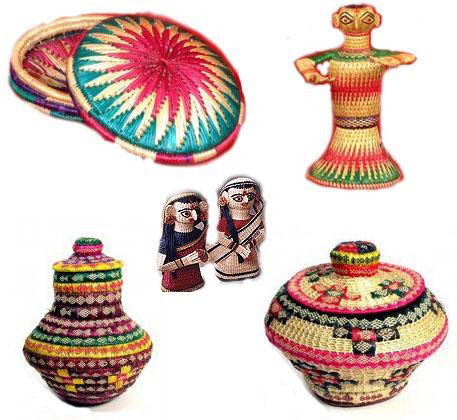
Decorative objects made with sikki grass, 2009
Tikuli art, is another 800-year-old vibrant gem from the capital of Bihar which involves melting glass and adding traced patterns in natural colours and gold foil to create tikuli (bindi). Many women wear it on their foreheads.
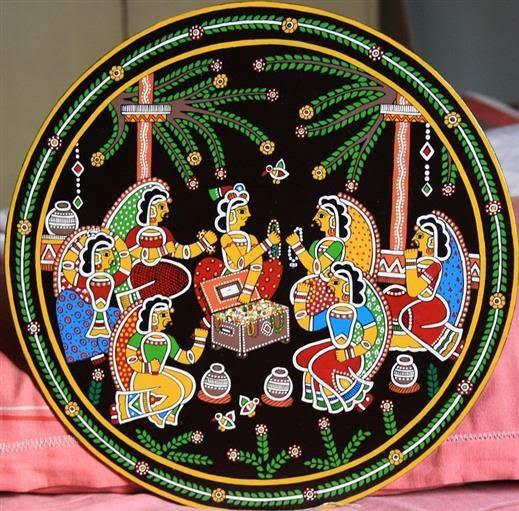
An ancient and commercially-famous art form that textile printing is, it is particularly used for making chunris in Patna with motifs like parrots, coconuts, etc.
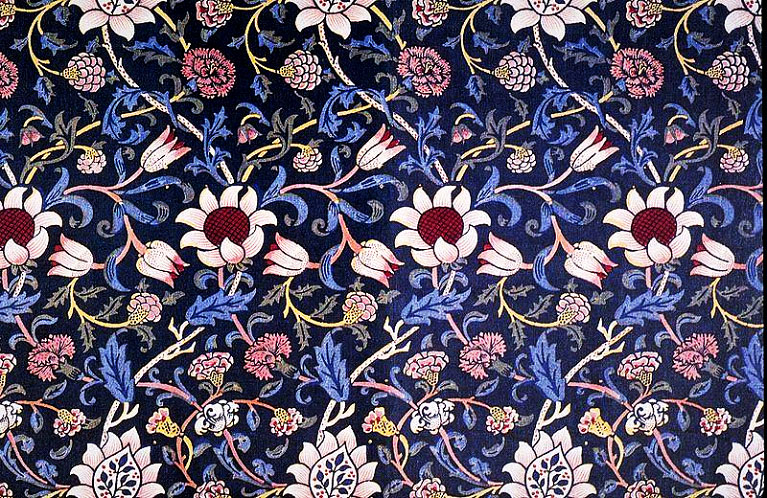
Both wood and stone carving are very important and ancient art forms from Bihar that have often been used to carve out many objects and have even assisted in making several archeological buildings and artefacts. The wooden toys and jewellery made of wood and stone are widely popular.
Several other artforms and local handicrafts that are famous in Bihar include bangle making, puppetry, Khatwa (embroidery), Sujini embroidery, lacquerware (beautiful boxes, containers to keep important items like jewellery, etc.), Zari and Kashida embroidery.
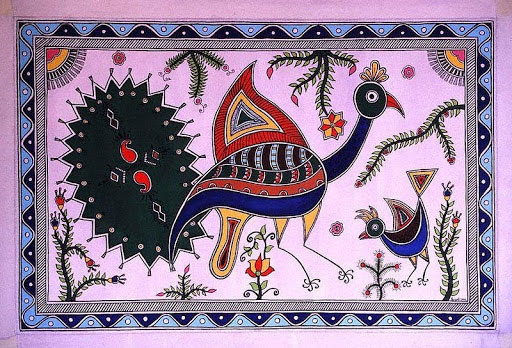
Mithila painting made with Sujini embroidery, 2006
The ongoing Coronavirus pandemic has affected the trade of various local handicraft makers and artists and in turn, especially the ones who reside in rural India. Lack of movement and the overall downfall in our economy have triggered a decreasing number of orders that artists receive and limiting the resources that are used in producing the supplies
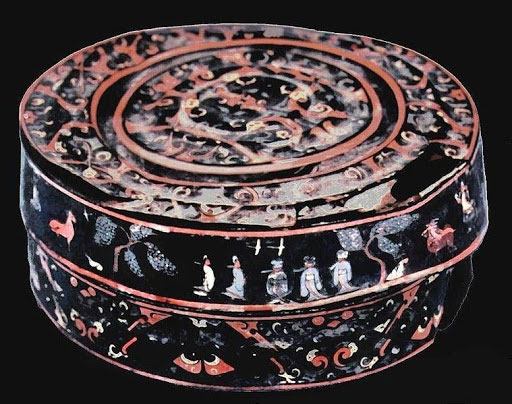
“There have been fewer orders in recent days,” says Shishu, co-founder of Madhubani Motifs. “Moreover, we are also struggling with producing supplies for the orders that we have already received.”
While already facing challenges in the capitalist market, the global pandemic has added to the crisis, affecting many individuals from rural India whose livelihoods solely depend on making Madhubani and other artforms.
“Most of the Madhubani and handicraft artists are women who live in rural areas and are some of the most vulnerable people in any situation pertaining to economic downfall and lack of orders,” says Rajiv Jha, another artist and the founder of Manorama Art & Craft. “Moreover, due to the lack of movement, many artists are unable to participate in exhibitions that have always been essential for boosting sales and networking.”
“With the drastic fall in the number of orders, we have started making masks which have helped us resume our work and support our artists,” says Asha Jha, founder of Madhubani Paints.
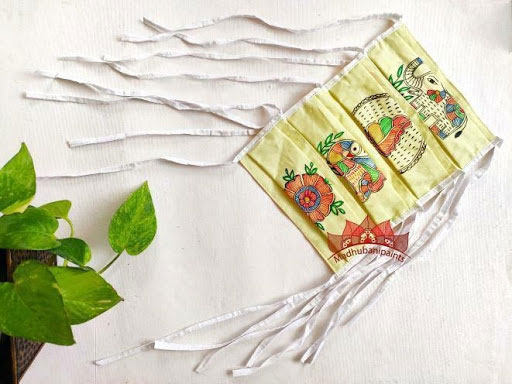
Masks made out of Madhubani Paints
Similar to Madhubani art, papier mache, another ancient art form from Bihar is made of dried newspaper and sheet soaked in a combination of water and multani mitti, and is used for making masks for various dance forms.
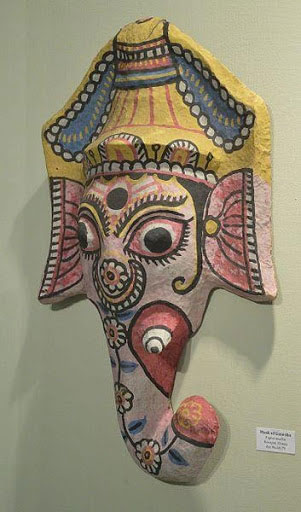
Folk art forms in India have a significant contribution to the overall narrative of art in our country. As the artists suffer the consequences of the pandemic, it is important to create systemic reforms and allocate essential funds but also make everyday switch to using handmade products in order to revive the trade of creating folk art.
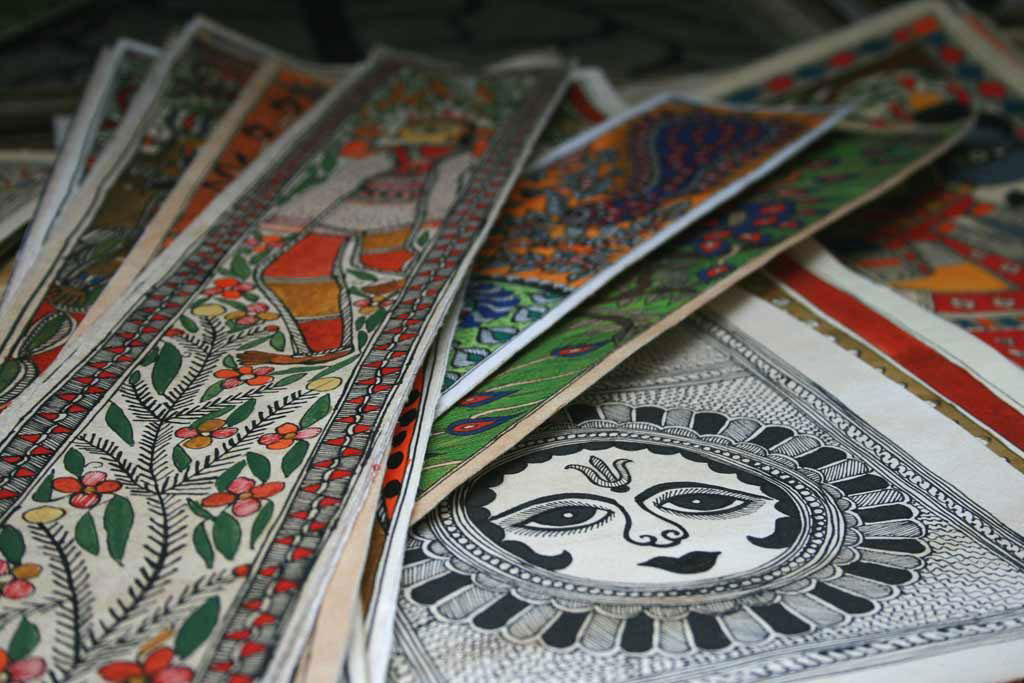
Madhubani artwork on face masks
“Madhubani artists should be equipped with enough resources provided by the state to compete with the capitalist market as well as the decline in economy,” says Asha Jha.
“We need to make a collective effort to sensitize the masses towards traditional folk art”, says Shishu. “We can consciously choose to include handmade products at home and work. The government should also try incentivizing small-scale artists involved in this trade.”
As we continue seeing Madhubani art evolving in the world, it’s time to support the individuals behind creating this highly intricate craft and bringing us the joy of centuries-old visuals on a daily basis.
As we continue seeing Madhubani art evolving in the world, it’s time to support the individuals behind creating this highly intricate craft and bringing us the joy of centuries-old visuals on a daily basis.
Text by Ayushree Nandan
Image Courtesy: Rajiv Kumar Jha, Shishu, Neepix.com, Wikimedia Commons, Pixels.com and Asha Jha
Find out more about the Craftsmen and the Craft:
https://madhubani.nic.in/history/
https://indigoarts.com/galleries/mithila-or-madhubani-paintings-bihar-india
https://www.medhajournal.com/mithila-museum-in-japan/
http://www.mithila-museum.com/english/pacific9912.html

